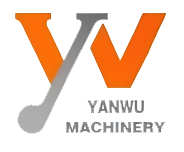Custom Roll Forming Solutions: Meeting Niche Requirements in Automotive and HVAC
The Roll Forming Process Explained
The roll forming process is a continuous bending operation in which a long strip of metal passes through sequential sets of rollers, gradually forming the metal into the required cross-section. It begins with feeding the material, typically from a coil or strip, into the roll forming machine. As the material progresses, it passes through forming stands that incrementally shape it at each stage. Precision is essential in this process, as it ensures that the roll profiles are accurately maintained throughout, leading to consistent product quality. A key advantage of roll forming machines is their capability to create complex shapes with high dimensional accuracy while minimizing waste, making them indispensable in modern manufacturing.
Material Versatility in Modern Applications
Roll forming is celebrated for its material versatility, accommodating a variety of materials such as steel, aluminum, and specialty alloys. Each material offers specific advantages, making roll forming suitable for diverse industries, including automotive, HVAC, and architecture. For instance, steel's strength and durability are ideal for structural components in vehicles, while aluminum is prized in HVAC systems for its lightweight properties. In architecture, the ability to use specialty alloys can enhance aesthetic and functional performance. A market report by Allied Market Research highlights that using diverse materials in roll forming can significantly boost performance metrics and result in better application-specific solutions across industries.
Automotive Industry Applications of Precision Roll Forming
Structural Components for Vehicle Safety Systems
Precision roll forming plays a critical role in producing structural components for vehicle safety systems, including crash structures, crossmembers, and bumper beams. These components are integral to ensuring passenger safety without adding excessive weight, an essential requirement in automotive design. The process allows for the production of high-strength, thin-walled sections that meet stringent industry standards for impact resistance and durability. According to industry reports, the ongoing demand for lightweight yet robust materials can be met effectively through custom roll forming techniques, which are known for minimizing material waste while maximizing structural integrity.
Complex Trim Profiles for Aesthetic Enhancement
The automotive industry also utilizes precision roll forming to create complex trim profiles that enhance vehicle aesthetics and functionality. This technology enables the production of intricate designs such as decorative grill bars and detailed window trims with consistent quality. Manufacturers and designers often prefer roll forming over traditional methods due to its ability to deliver precise, repeatable profiles without compromising on the appearance or fit of the final product. Testimonials from automotive designers highlight the seamless integration of custom profiles as a significant advantage, allowing for innovative styling and superior performance in modern vehicles. The capability to maintain uniformity in design elements without additional complexities underscores roll forming as a preferred method for aesthetic enhancements.
HVAC System Optimization Through Custom Profiles
Durable Air Duct Fabrication Methods
Custom roll forming is a highly effective method for fabricating air ducts, offering significant durability and efficiency advantages. The process allows for the creation of complex linear parts in a single continuous operation, which reduces both scrap and production time while enhancing the overall strength and longevity of the HVAC components. Custom roll forming supports various metal choices like steel and aluminum, each contributing different qualities based on the technical specifications needed for specific HVAC applications. According to industry studies, well-designed air duct systems can significantly improve energy efficiency by minimizing air resistance and leaks—thus optimizing airflow and reducing energy consumption. The choice of durable materials ensures that air ducts withstand corrosion and environmental challenges, thereby extending the system's lifecycle.
Specialized Brackets for Climate Control Units
In climate control systems, specialized brackets play a critical role in ensuring that components are securely held in place and function optimally. Custom roll forming facilitates the production of tailored brackets that meet specific load and environmental conditions essential for HVAC applications. Design considerations, including the material's strength and resistance to environmental factors such as moisture and temperature fluctuations, are pivotal in producing brackets that fulfill stringent HVAC requirements. Case studies have demonstrated successful installations where custom roll formed brackets provided enhanced support and resilience in demanding environments, underscoring their effectiveness. These tailored solutions not only ensure stability and reliability in HVAC systems but also contribute to the overall efficiency and long-term cost savings by reducing the need for replacements or repairs.
Technical Advantages of Custom Roll Forming Solutions
High-Speed Production for Cost Efficiency
The efficiency of high-speed roll forming operations is a standout advantage in reducing production costs. This process enables continuous bending of metal into complex shapes at high volume, resulting in lower labor costs and minimized material waste. For instance, high-speed roll forming can achieve up to a 50% reduction in production costs compared to traditional methods by consolidating multiple manufacturing steps into a single operation. Additionally, modern roll forming machines significantly enhance throughput without compromising quality, ensuring consistent and high-quality outputs at impressive speeds. In comparison to traditional fabrication methods, high-speed roll forming not only expedites production timelines but also increases cost efficiency, making it an attractive option for industries requiring large-scale production of metal components.
Tight Tolerance Maintenance in Long-Run Projects
Custom roll forming technology excels in maintaining tight tolerances, which is crucial for high-precision applications across various industries. This capability is supported by stringent industry standards that emphasize accuracy for precision components, ensuring that each part meets exact specifications. The roll forming process has demonstrated its proficiency in sustaining consistent quality over long-run projects, thereby minimizing waste and defects. For instance, its precise tolerance maintenance allows for seamless integration of components, which is essential in sectors such as automotive and aerospace, where perfection is non-negotiable. By offering this level of precision and consistency, custom roll forming not only enhances product reliability but also reduces rework, contributing to more efficient and streamlined manufacturing processes.

 EN
EN



















